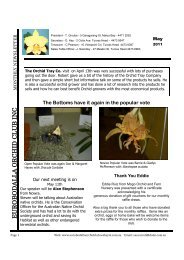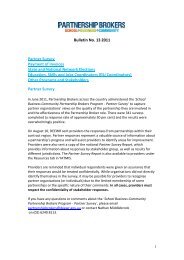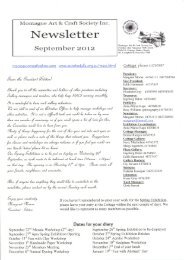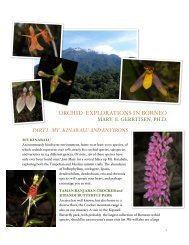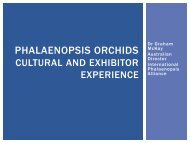Orchid Growing Substrates
Orchid Growing Substrates
Orchid Growing Substrates
You also want an ePaper? Increase the reach of your titles
YUMPU automatically turns print PDFs into web optimized ePapers that Google loves.
e harvested any longer. It is important to remember that first, there are different species<br />
and second there are different areas where the same species grow. In some areas, one<br />
species can make one type of growth, but in a warmer place, the cell walls, and general plant<br />
chemistry and metabolism will be different. Not only must the natural resource be harvested<br />
of the proper species, but from the proper place as well. Tasmania at a point did produce for<br />
a short while sphagnum, however the capacities were much lower than New Zealand in terms<br />
of areas that could be harvested sustainably. Xavier was very surprised when he visited New<br />
Zealand to find out that the sphagnum is not harvested from very old bogs, like people used<br />
to see in Europe or North America, but from fields that had been pastured until quite<br />
recently, or decades old cleared forests and bushes. In fact in New Zealand, the sphagnum<br />
comes from artificially managed lands, nearly all the time, not from a natural ecosystem that<br />
is poached. Sphagnum is harvested every 4 to 7 years, depending on the location, and it<br />
comes from places that were cultivated before for various agriculture or pasture purposes.<br />
The two most important species are sphagnum cristatum, the big head type, and sphagnum<br />
subnitens, a smaller variety. However it is interesting to note that nearly all the time they<br />
grow together, except in a few places, and it can be troublesome to make a ‘pure’ batch of<br />
one or the other species.<br />
Chile Sphagnum.<br />
o<br />
Later, Chile sphagnum moss started to become an alternative. First, Chile traders claimed that<br />
it was the same as New Zealand. It appeared from the early growers trials that it looked a bit<br />
the same, though it had the reddish color typical of Sphagnum magellanicum, but soon some<br />
growers in Japan and the USA found out that some species would simply refuse to grow good<br />
root system in the Chile sphagnum vs. New Zealand sphagnum moss, in their conditions.<br />
Some years later, it has been made clear that those are different species. It is absolutely not a<br />
renewable resource, and nowadays it becomes scarcer, despite a very low, attractive price.<br />
The bogs are cleared one after each other, and now most of the stock comes from the south,<br />
and further south in Chile, at increased transportation expenses. The quality suffers especially<br />
in recent years, as it is required for the Chilean exporters to harvest lower quality, or<br />
previously discarded bogs. It does not renew, in the way that the orders are so huge that<br />
everything is really cleared. It is interesting to note too that it grows in areas with quite high<br />
water salinity.<br />
Chinese Sphagnum.<br />
o<br />
China is a very old, newcomer. They harvested Sphagnum for their own culture for ages, at<br />
least 150 years, if not more. There are growers that get absolutely amazing results in China<br />
with their local sphagnum moss, unfortunately there are many species, and as previously said,<br />
Xavier Garreau de Loubresse<br />
14



